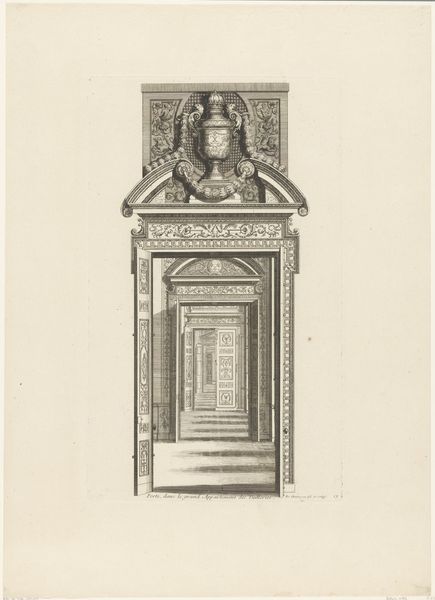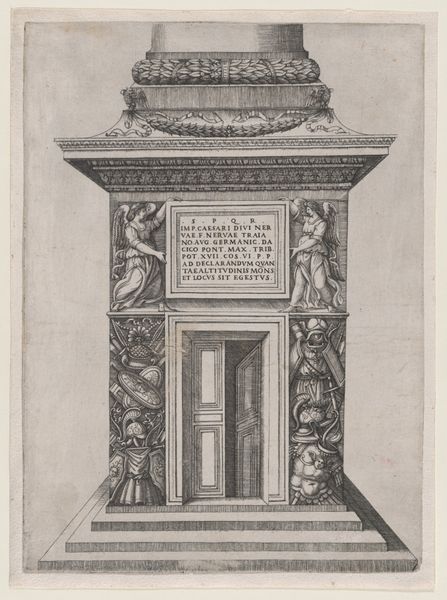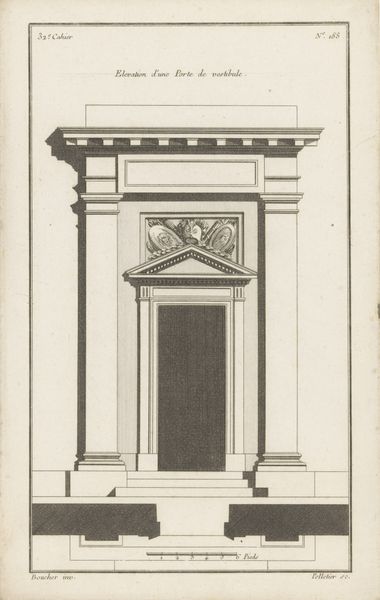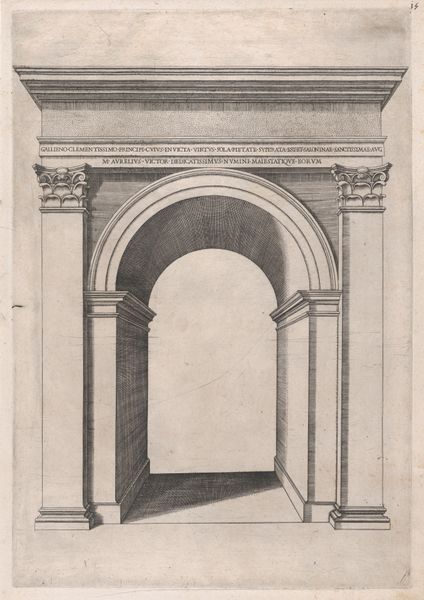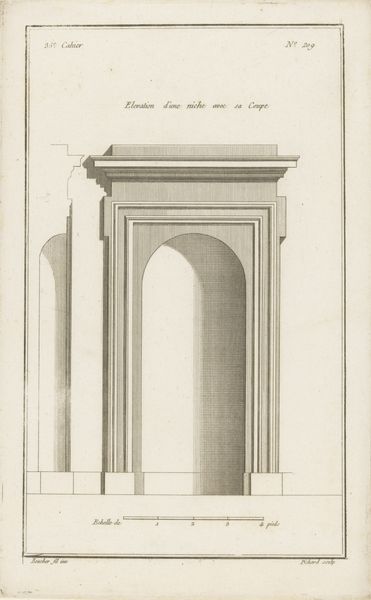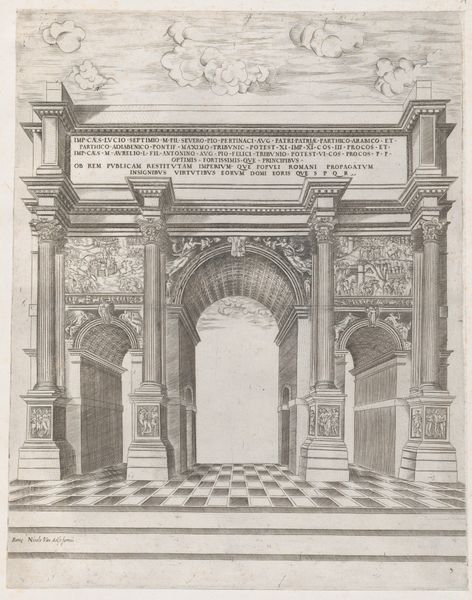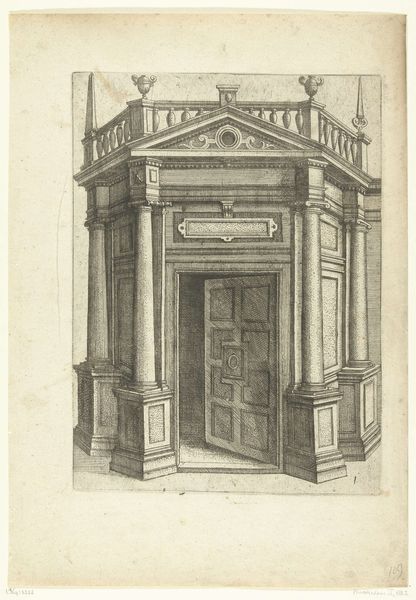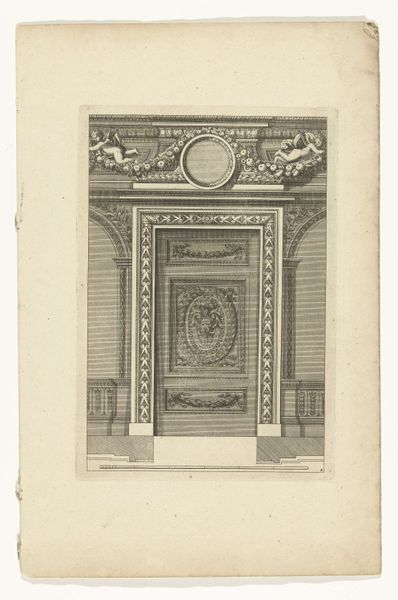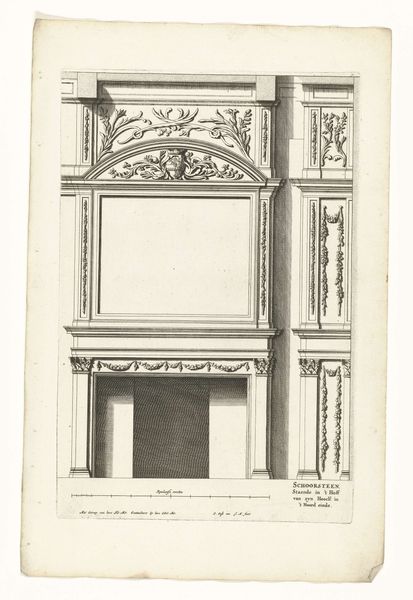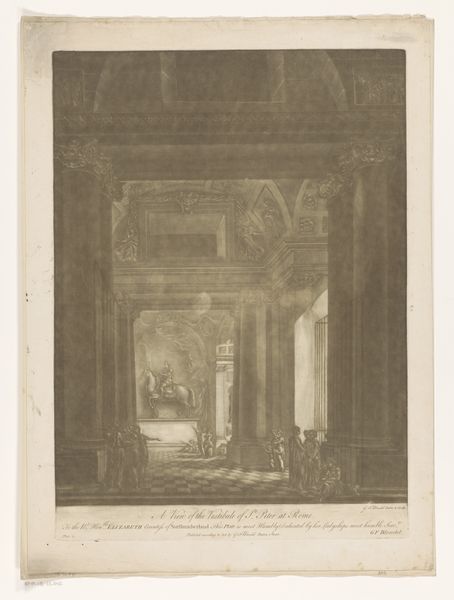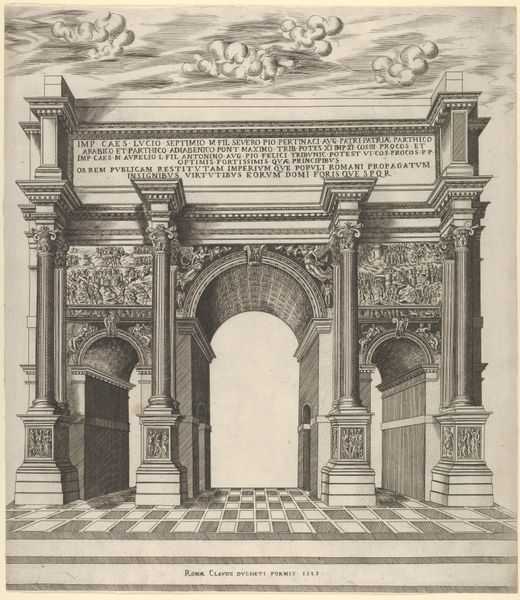
Speculum Romanae Magnificentiae: Portal of the Temple of Romulus and Remus 1582
0:00
0:00
drawing, print, architecture
#
pencil drawn
#
drawing
#
amateur sketch
#
aged paper
#
toned paper
#
light pencil work
# print
#
pencil sketch
#
old engraving style
#
arch
#
golden font
#
architecture
#
historical font
#
columned text
Dimensions: sheet: 11 7/16 x 8 1/4 in. (29 x 21 cm)
Copyright: Public Domain
Editor: We’re looking at "Speculum Romanae Magnificentiae: Portal of the Temple of Romulus and Remus," a print from 1582 attributed to an anonymous artist. It’s currently held at the Metropolitan Museum of Art. It gives the impression of depth through multiple layers of archways, almost like looking through a telescope into the past. How do you interpret the artist's choices here, focusing on its form? Curator: The artist meticulously rendered the architectural forms through precise lines and calculated arrangements. Consider the insistent symmetry—the mirroring of columns, the echoing rectangles of the archways. Do you observe how the repetition establishes a visual rhythm? The formal arrangement supersedes the purely representational. The essence lies not just in depicting a temple but in conveying structure. Editor: The lines also feel very clean and rigid. Almost mathematical in precision. It's compelling but a bit stark. Is there any emotional value to this piece for you? Curator: Emotion, while present in some interpretations, isn't paramount in the formalist lens. Observe the relationship between the shadowed recesses and illuminated planes. How does this play of light and shadow sculpt the architectural form? Editor: It creates volume and really emphasizes the geometrical purity of the design. By analyzing this, you've made me focus on structure, not just image. It becomes much more powerful that way! Curator: Exactly. By directing your gaze at composition, you elevate your appreciation beyond surface level towards deeper architectural principles.
Comments
No comments
Be the first to comment and join the conversation on the ultimate creative platform.


